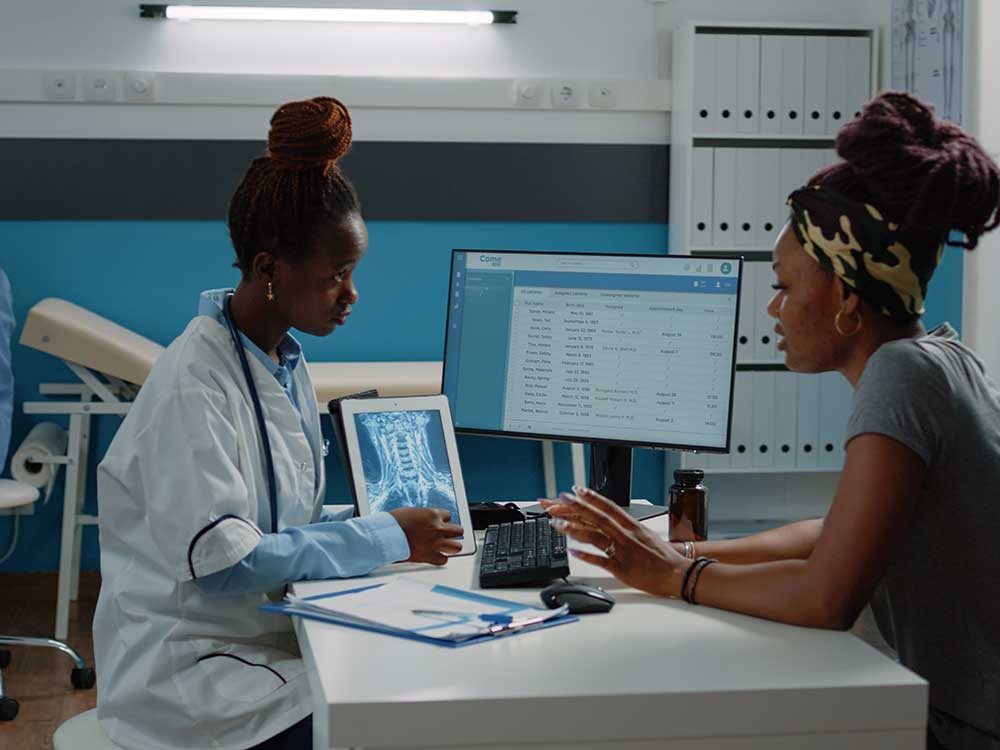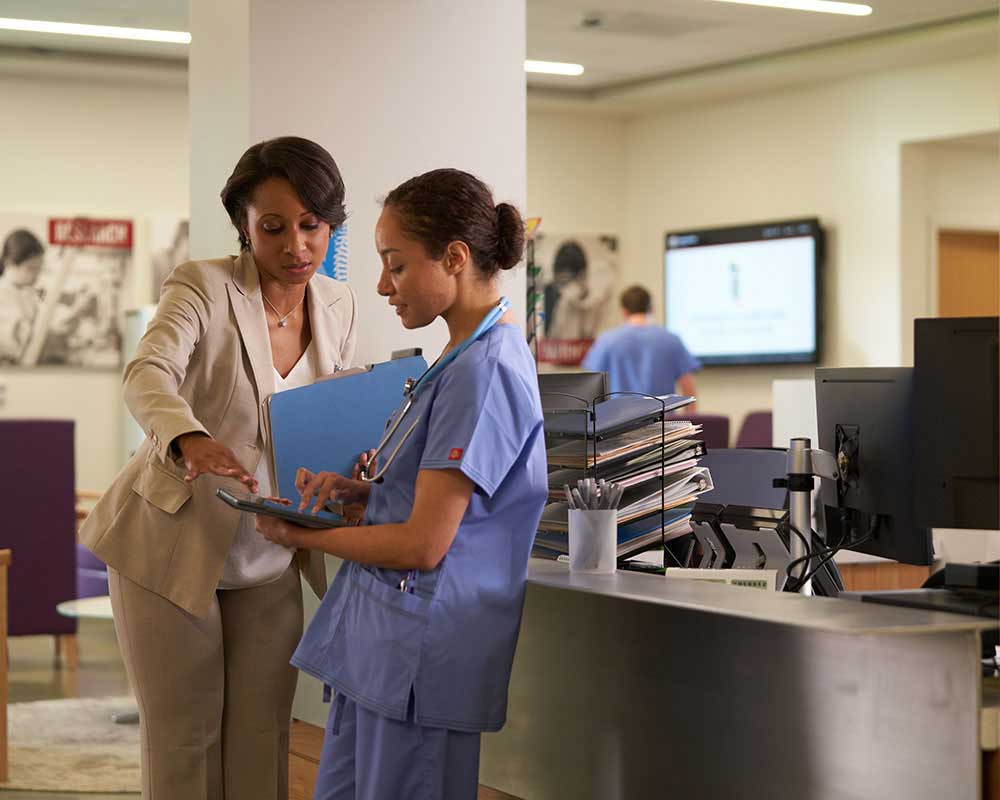Recognizing the Trick Duties and Duties in Medical Administration
Recognizing the Trick Duties and Duties in Medical Administration
Blog Article
Finest Practices in Medical Management for Improving Efficiency and Reducing Expenses
In the ever-evolving landscape of health care, the pursuit of best practices in clinical management is critical for enhancing performance and suppressing expenditures. By integrating innovative technologies such as electronic health and wellness documents and telemedicine, doctor can streamline procedures and improve individual care. Innovation alone is not a remedy; enhancing resource allowance and promoting collective interaction amongst treatment groups are equally critical. As organizations strive to stabilize high quality and cost, what strategies should be prioritized to accomplish these dual objectives? The solution to these concerns hold the trick to a more lasting health care system.
Leveraging Advanced Technology
In today's quickly progressing medical care landscape, leveraging advanced modern technology is no more optional but crucial for efficient clinical management. The assimilation of electronic remedies into healthcare systems has changed the way centers run, improving procedures and enhancing individual care. Electronic Wellness Records (EHRs) are pivotal, supplying thorough individual information that can be accessed instantly by accredited employees, hence minimizing redundancy and minimizing mistakes. By centralizing patient information, EHRs eliminate the demand for difficult documentation and help with smooth interaction amongst medical care suppliers.
Telemedicine is an additional technical innovation that has actually reinvented person interaction. It supplies comfort for both clients and healthcare experts by making it possible for remote assessments, which can decrease the demand for in-person sees and enhance visit scheduling. Additionally, telehealth platforms can expand health care accessibility to rural or underserved areas, connecting gaps in care distribution.
In addition, using Artificial Intelligence (AI) and artificial intelligence is becoming increasingly common in anticipating analytics, allowing for very early discovery of possible health and wellness problems and more educated decision-making. These modern technologies, when incorporated effectively, can enhance analysis accuracy and individualize patient therapy plans, eventually bring about boosted medical care end results and operational effectiveness.
Optimizing Source Allocation
Efficient resource allowance is critical for maximizing the effectiveness of clinical management. By tactically managing resources such as personnel, tools, and finances, healthcare centers can considerably enhance their operational performance, enhance person results, and decrease unneeded expenses. The initial step in optimizing resource allowance includes conducting a detailed assessment of existing possessions and identifying locations where sources might be underutilized or exhausted. This evaluation needs to be data-driven, making use of metrics and analytics to notify decision-making procedures.
Focusing on resource appropriation based on patient requirements and solution needs is crucial. This includes aligning sources with high-demand locations, such as emergency care or specialized therapies, to ensure timely and effective patient care. Applying versatile staffing versions can additionally enhance labor sources by readjusting personnel allotment in action to changing person quantities. In addition, welcoming telemedicine and other technological remedies can reduce physical source restraints by providing different opportunities for patient-provider communications.
Funds ought to be thoroughly monitored and designated with critical insight to support both temporary operational needs and long-term institutional objectives. This consists of investing in training programs that improve staff competencies and embracing energy-efficient practices that minimize operational expenses (medical administration). Eventually, an enhanced source allowance method promotes a sustainable health care setting that is receptive, efficient, and monetarily sensible
Streamlining Operations Procedures
When medical care centers goal to boost operational efficiency, streamlining workflow processes ends up being an essential focus. Reliable operations decrease redundancy, get rid of unneeded steps, and boost control amongst medical care experts. This technique not just increases service delivery but also boosts the quality of client treatment.

Following, technology integration plays a significant role in enhancing operations. Carrying out digital wellness documents (EHRs) and electronic doctor order entry (CPOE) systems minimizes documents, lessens human error, and makes sure info is obtainable to all pertinent personnel. Furthermore, leveraging telemedicine platforms can simplify patient consultations and follow-ups, reducing the pressure on physical infrastructure.

Eventually, streamlined workflows result in cost decreases and enhanced client satisfaction, cultivating a much more lasting health care atmosphere.
Enhancing Information Management
Building upon structured process, optimizing data management ends up being a vital element ahead of time healthcare administration. Reliable information administration systems are crucial for maintaining accurate person records, improving decision-making, and making sure compliance with regulative requirements. By implementing robust data monitoring solutions, medical care facilities can enhance the quality of person treatment while at the same time decreasing functional prices.
One key aspect of enhancing data monitoring is the integration of innovative digital health document (EHR) systems. These systems assist in the smooth exchange of patient information throughout various divisions, minimizing duplication of go now examinations and reducing mistakes. A properly designed EHR system supports information analytics, making it possible for healthcare suppliers to recognize patterns and make informed decisions relating to individual treatment.
Moreover, safeguarding client data is critical. Taking on thorough cybersecurity procedures, consisting of file encryption and normal audits, makes sure the integrity and privacy of delicate information. This not only secures individuals yet additionally maintains the institution's credibility.
Purchasing personnel training is one more important aspect. Enlightening medical care specialists on information monitoring practices improves their capability to properly use modern technology, causing boosted individual results. Finally, improving data administration via advanced innovation and comprehensive training This Site is crucial for attaining efficiency and expense reduction in clinical management.
Fostering Collaborative Interaction
A crucial part in advancing clinical management is promoting collective interaction among medical care specialists. Efficient interaction is extremely important for making sure seamless patient treatment, maximizing treatment results, and minimizing mistakes. By motivating open discussion and control throughout multidisciplinary teams, healthcare organizations can enhance their functional effectiveness and lower unnecessary expenses.
Central to this technique is the combination of interaction innovations such as electronic health and wellness documents (EHRs) and safe and secure messaging platforms, which help with the rapid exchange of critical client info. These tools enable doctor to gain access to and share data in actual time, ensuring that all staff member are educated and aligned in their decision-making procedures. Furthermore, regular group conferences and interdisciplinary rounds can further promote a culture of collaboration and liability.
Educating programs focused on enhancing communication skills are additionally vital. Ultimately, cultivating collaborative communication leads to enhanced top article health care distribution and expense savings.

Conclusion
Including sophisticated innovation, such as digital wellness documents and telemedicine, along with optimized source allowance and streamlined process procedures, is important for boosting effectiveness in clinical management. Efficient data administration and fostering collaborative interaction among healthcare teams are important for decreasing redundancies and enhancing treatment high quality. By focusing on preventive care and participating in top quality improvement campaigns, medical care organizations can achieve substantial price savings and boosted individual outcomes, consequently making certain sustainable healthcare distribution in a significantly intricate environment.
Report this page